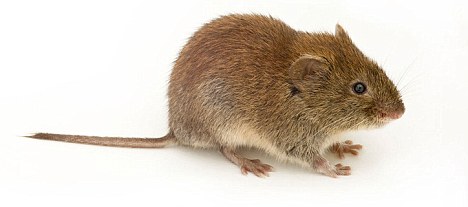Viking longboats carried house mice to colonies in Iceland and Greenland - and their descendants are still alive today.
Scientists compared modern mouse DNA with ancient samples from mouse bones found at archaeological sites.

Descendants of these stowaways can still be found in Iceland where DNA samples were collected from nine sites.
From Iceland, the mice continued their Viking voyages to settlements in Greenland.
However, no trace of the Norse mice could be found in Newfoundland, even though the Vikings are known to have reached the Canadian province.
The researchers focused on mitochondrial DNA which is housed in battery-like powerplants in cells and only inherited from mothers.
It can be used by scientists to trace maternal lineages far back in time.
Study leader Dr Eleanor Jones, from the University of York, said: 'Human settlement history over the last 1,000 years is reflected in the genetic sequence of mouse mitochondrial DNA. We can match the pattern of human populations to that of the house mice.'

The research is published in the online journal BMC Evolutionary Biology.



I consider that the mice were food ... and the Vikings were actually reptilians camouflaged in the illusion of humans as they invaded lands of the Mother Earth matrix ....